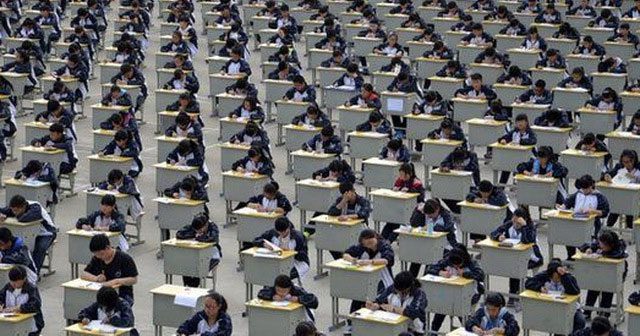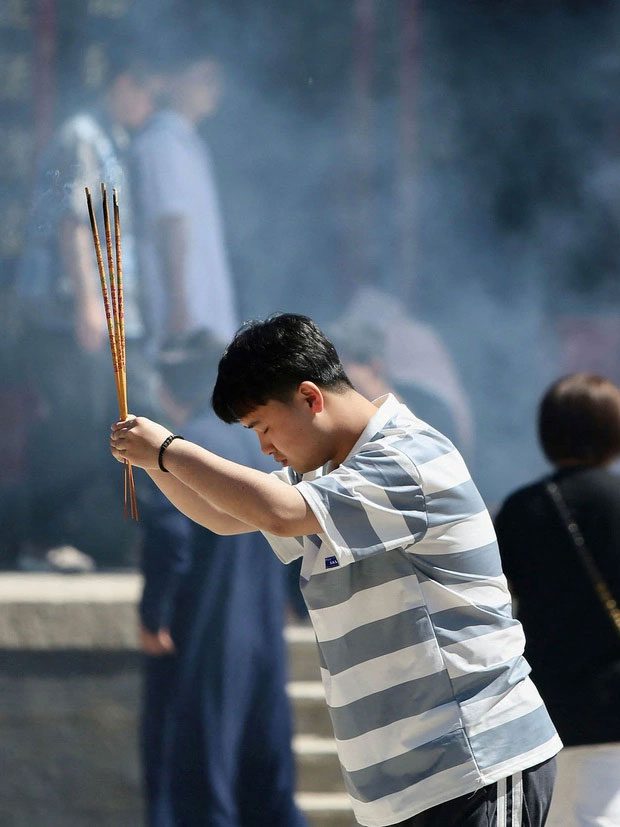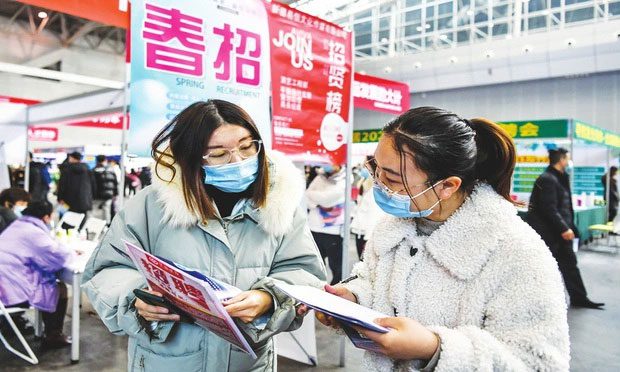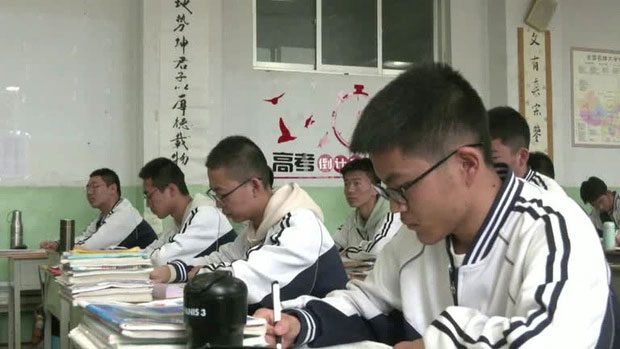A record-breaking 12.9 million candidates are taking the university entrance exam in China, according to statistics from CNN. In 2022 and 2021, the number of candidates was over 11 million and 10 million, respectively.
The Exam with the Highest Number of Candidates

This year, 12.9 million candidates are taking the university entrance exam in China. (Illustrative image).
Unlike American students who can take the SAT multiple times, achieving a high score on the Gaokao, a grueling two-day university entrance exam, is the only way to gain admission to the country’s top universities. Most students in China have only one chance to take this challenging exam. Therefore, it can be said that for millions of Chinese candidates, this is the moment where 12 years of hard work finally bear fruit.
Last week, media outlets published photos showing many students visiting temples to light incense and pray for good results. Several teachers distributed rice dumplings for good luck. Chinese social media was flooded with messages of encouragement and good wishes. This is also the first university entrance exam after the country relaxed its COVID-19 prevention measures. Strict protective measures have been unprecedented.
Due to the record number of candidates and the ongoing potential risks of the pandemic, Chinese authorities have implemented strict security measures to ensure a successful exam.
On June 3, Chinese Vice Premier Ding Xuexiang directed the Ministry of Education to ensure the smooth conduct of the university entrance exam. The Global Times reported that many locations in China have upgraded security checks for the exam, including the installation of smart security screening devices for the first time and requiring candidates to refrain from wearing metallic jewelry to prevent cheating and ensure exam fairness.
Additionally, in order to eliminate potential misconduct during the university entrance exam, the Ministry of Public Security launched a campaign to expose organized cheating, including the sale of recording devices and hidden cameras designed for examination fraud. This anti-cheating campaign was initiated just days before the exam. Several provinces, including Guangzhou and Yunnan, have enhanced security checks, including intelligence-led security checks for the first time this year, to detect electronic devices such as mobile phones, headphones, and smartwatches that candidates could use to cheat.

Chinese candidates pray for good luck before entering the decisive university entrance exam. (Source: Reuters)
The city of Zunyi in Guizhou Province requires candidates to undergo a three-step security screening process before entering the exam venue. Many other examination sites have also implemented artificial intelligence technology for facial recognition to prevent proxy test-takers.
On June 4, the Ministry of Education warned this year’s university entrance exam candidates to participate with integrity, adhere to the rules, and avoid being exploited during the exam. According to education experts, cheating on the Gaokao is extremely difficult, and candidates who intend to cheat may find it hard to succeed, especially compared to other exams like the SAT or ACT. Once a test paper is leaked, an alternate version is immediately activated. If cheating is detected, candidates could face bans from taking the exam for several years, and in serious cases, imprisonment for many years.
Job Market Outlook Dims Compared to Previous Years
The number of candidates this year surged by 980,000 compared to last year. This has caused students to worry about facing an uncertain economy with dwindling job opportunities, with some opinions suggesting that high competition will gradually diminish the value of a university degree. Even though China has recorded a declining birth rate in recent years, it will take several years for this trend to impact society meaningfully. For now, at least in the coming years, the number of candidates taking university entrance exams will only continue to rise.

The youth unemployment rate in China is high. (Source: AFP)
A user on the social media platform Douyin recalled participating in the exam in 2000 when there were only about 3.75 million candidates. “Yet now, my children’s generation has 12.91 million candidates, nearly four times as many. This is truly a challenge,” the user lamented.
Today’s Chinese youth are the most educated generation in decades, with a record number of graduates from colleges and vocational schools. However, they also face an increasing gap between expectations and opportunities, with rising unemployment rates in urban areas following three years of restrictions that severely impacted small businesses due to the pandemic. According to figures from CNN, one in five young people in China’s cities is unemployed.
In recent years, the government has launched a crackdown on regulations for technology, real estate, and education companies. This has posed challenges in the private sector, which provides more than 80% of jobs in China. The urban unemployment rate for those aged 16 to 24 reached a record high of 20.4% in April, according to data released by the National Bureau of Statistics. And this rate may increase further, as an estimated 11.6 million university students are set to graduate this year.

The Gaokao remains the only gateway to the future for millions of young Chinese. (Source: Reuters)
Despite this, there are also optimistic voices on Chinese social media, noting that passing the Gaokao is one of the most memorable milestones in their lives, a moment they will look back on with great pride even decades later. Therefore, more than 12 million candidates in China are striving to overcome the toughest “gateway” of their lives to secure a good position from the very first days in university.


















































